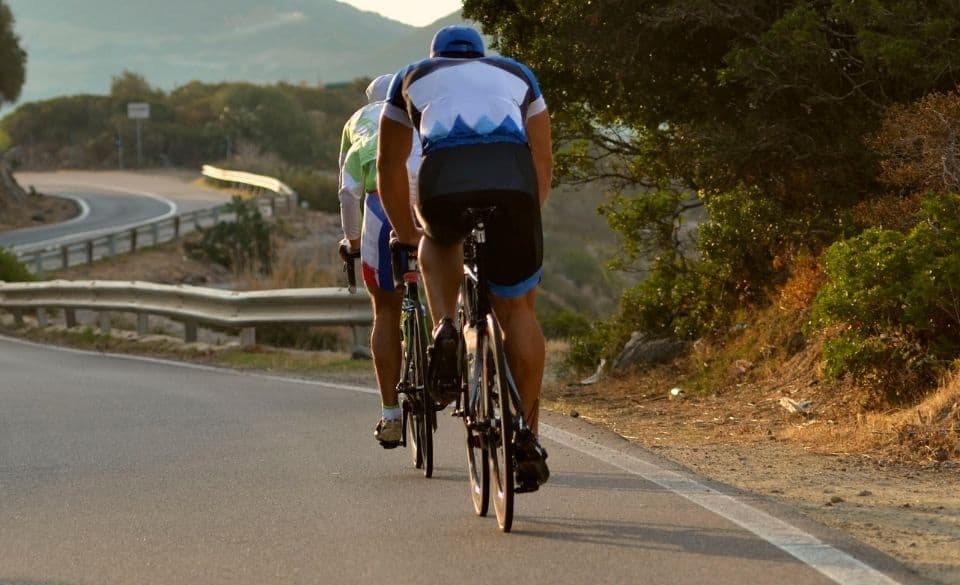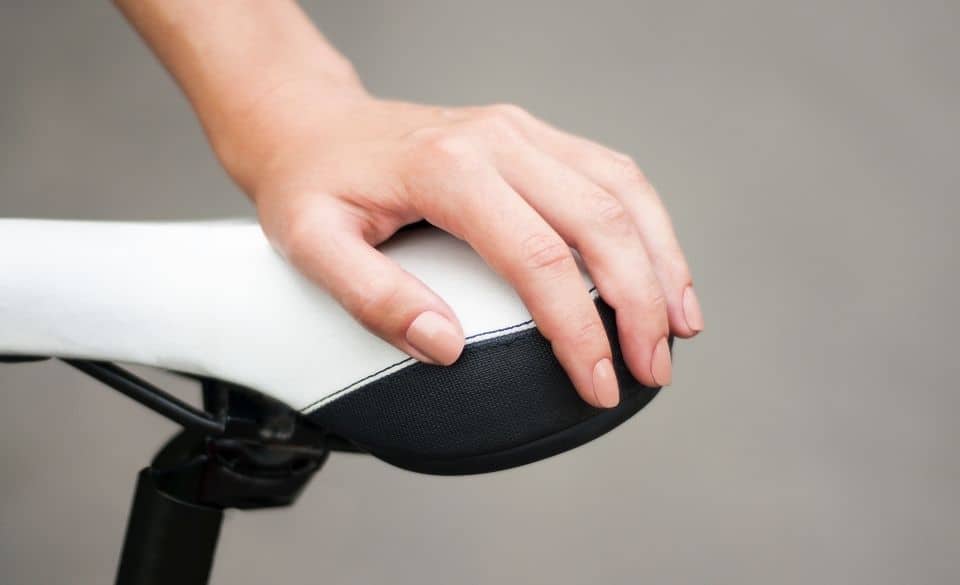
Sit Bone Pain While Cycling? A Complete Bicycle Saddle Width Guide
Page Contents
Sit bone pain while cycling is a common issue cyclists face. Often this is related to the saddle. However, other factors such as overstretching, injury, and prolonged sitting can also cause pain in the sit bones while riding.
In this article, we look at what may be causing sit bone pain when cycling and how you can address this issue.
Sit Bone Pain While Cycling? Here’s What It Means
If you experience sit bone pain while cycling, you may want to check if your saddle is the correct width. You can do this by measuring yourself at a local bicycle shop or bike fitter. Or keep on reading to find out how to measure your sit bones at home.
If you have been sold the correct saddle width, it is important to check the fore-aft of the saddle. Because if you are experiencing sit bone pain, your fore-aft position of the saddle may be too far back.
When your saddle fore-aft is too far back, it will shift more of the bodyweight onto the sit bones. That means any excess weight that should be distributed around the body is now being loaded onto the sit bones.
While this may sound normal, too much weight on the sit bones can sometimes have adverse effects, causing bruising and discomfort.
If the saddle width and fore-aft are ok, you may want to check other problems that may cause pain and discomfort. These include:
– Long periods of exercise with the legs
– Injury to sit bones (stress fracture, hamstring bruising)
– Overstretching of the muscles surrounding the sit bones
– Prolonged sitting
Bicycle Saddle Width Guide
Knowing how to choose the correct saddle is crucial if you are cycling regularly. Following a bicycle saddle width guide can help you choose the right one based on your sit bone dimensions. It can also take into account the flexibility of your lower back and position on the bike.
Each manufacturer has its own measurement system, although one thing they do all have in common is measuring the width of your sit bones.
This doesn’t mean you need to always go into a shop to be measured, you can measure your sit bone width at home instead.
Here is a basic guide that can help you measure your sit bones at home:
Once you have followed the instructions above, you can then look at each manufacturer for their saddle bicycle width guide. Some companies like Bontrager use a color combination for different widths, while others stick with basic measurements.
Bike Saddle Size Chart
If you are looking for the correct bike saddle size chart you will need to refer to the manufacturer’s website. However, it is common that manufacturers recommend 130 mm size saddles for narrow sit bones, 143 mm width saddles for medium sit bones, and 155 mm for wide sit bones.
Although not everyone is the same and many people will sit slightly between these measurements. That’s why some companies manufacture saddles in sizes 126 mm,128 mm, 130 mm, 133 mm, 140 mm, 142 mm,145 mm, 148 mm 152 mm, 155 mm and various other sizes.

Common Symptoms of Narrow Bike Saddles
If you are riding a bike saddle that is too narrow some of the symptoms you may experience are:
– Numbness in the groin
– Constant shifting backward on the saddle
– Rotation of the hips and/or lower back
Unfortunately, because your sit bones are positioned on the outside of the saddle with no support, it is common that riders often shift themselves to the back of the saddle. The body is looking for support, and the brain tells the body naturally to move to the widest part of the saddle.
While this movement may temporarily help support the sit bones, the rider then ends up overextending the leg. This then forces the body forward again to limit the extension of the leg, thus forcing the rider to constantly move back and forward.
Other symptoms such as lower back pain are common when using a saddle that is too narrow. Since the sit bones aren’t supported correctly, there is nothing to help support the hips from dropping under load. Thus placing more stress on the lower back as it tries to keep the hips horizontally inline.
Measuring Sit Bone Width – A Complete Guide
Measuring sit bone width can be done in various ways. That includes at home and via your local bike shop or bike fitter. Below are some of the ways to measure your sit bone width.
Foil Method
Place foil on a bench or hard surface. Sit on the foil and lean forward at an angle similar to your riding position. This should leave two impressions from your sit bones. You can now then measure the distance between each point (deepest impression).
Damp Method
This method involves using water to make an imprint similar to the foil method. Start by placing a couple of sheets of paper on a hard surface. Slightly dampen your sit bone area (tight clothes are recommended) and sit on the paper and learn forward. Mark the center of each imprint quickly and measure the distance between each.
Cardboard Method
Similar to the damp and foil method, the carboard method is one of the easiest ways to measure your sit bone width. Use a piece of corrugated cardboard and place it on a hard surface (coffee table). Sit down and hold either side of the coffee table and force your pelvic bone into the cardboard. Then measure the indentations from center to center.
Retail Measuring Tool
Most bike shops offering measuring services. This includes a bench that uses silicon to allow the sit bones to leave imprints for the person to measure. One of the most common saddle measuring tools used by bicycle shops is the Bontrager saddle measuring system.



